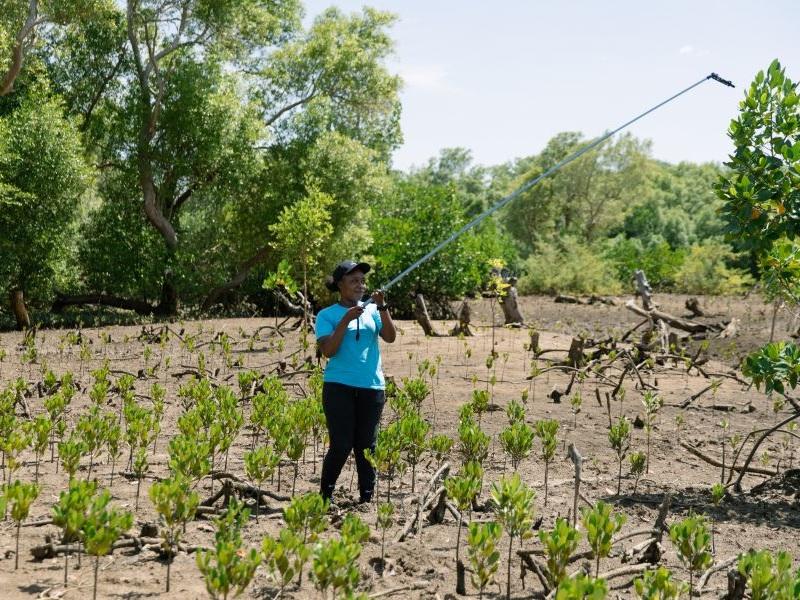
The Intact Centre on Climate Adaptation’s new report on mitigating the effects of rising water levels.
Canada should increase its focus on nature-based solutions to help deal with the effects of rising water levels along our coastlines, says an intensive study from the Intact Centre on Climate Adaptation at the University of Waterloo.
The report, titled ‘Rising Seas and Shifting Sands: Combining Natural and Grey Infrastructure to Protect Canada’s Eastern and Western Coastal Communities,‘ distinguishes between two types of coastal protection.
The “grey” method involves manmade engineering like seawalls and dikes. The natural method is exactly that, defined as “Measures that depend on, or mimic, natural systems to manage flood and erosion risk, such as saltmarsh restoration or replenishing beach and dune systems with sand.”
Intact Centre espouses dual approach
The Intact Centre makes the case for utilizing both methods together. Joanna Eyquem, the centre’s managing director of climate resilient infrastructure, feels Canada is falling behind particularly in the area of natural infrastructure given its natural resource-heavy reputation.
“I think the factors that need to be solutions are, kind of, one element of our toolbox, but they’re very underused and undervalued in Canada,” Eyquem said, “and they bring all these additional benefits that grey infrastructure just doesn’t bring.
“We don’t have technical standards around nature-based solutions in Canada, because we haven’t really implemented enough of them. It’s still seen as experimental, even though it’s been demonstrated elsewhere.”
The centre does include several examples of nature-based solutions in Canada. Among them is the implementation of intertidal reefs in Souris, P.E.I. to protect the Trans-Canada Highway, or protecting the Portage Park midden in View Royal, B.C from erosion.
This year, 13.5 per cent of Canada’s population lived within 10 km of a coastline. In 2019, coastal communities were identified as one of the top-six areas of climate risk facing the country by the Canadian Council of Academies.
Eyquem calls the relative lack of natural-based solutions a bit of a “chicken and egg” situation. Meaning, they’re not as present because “Canadians haven’t seen them work as much.”
International case studies
Several international case studies of natural solutions for mitigating the impact of rising sea levels are included in the 95-page report.
Eyquem singles out one in the Netherlands, a low-lying, flood-prone country with nine million people living along its 350 km of coastline.
The natural part of the solution is sand nourishment, or managing the movement of sediment. This tactic has been utilized since 1990 to maintain dunes and beaches in their 1990 positions, referred to as the Coastal Foundation Zone. A total of about 12 million square meters is “nourished” every year and the effects last for about five years.
This, combined with dikes further inland, provides protection along the coast.
“Nourishing that area with sand provides protection but it can also boost the local economy by providing tourism and that’s the nature of a solution,” Eyquem said. “It has to be the right conditions for these nature-based solutions to work, you can’t just create them where they wouldn’t naturally occur or where weather conditions are not right. So that’s why using grey infrastructure with nature-based solutions gives us a more diverse toolbox to use.”
Overall, the University of Waterloo research pushes for three clear objectives from its publication: National standards to factor the benefits of nature-based solutions into decision-making; performance monitoring to demonstrate where and how nature-based solutions can work best in Canada; and engagement of the private sector to help finance and deliver nature-based solutions.
Help from the private sector on rising water levels
For private sector support, Eyquem once again points to a case study, this time in Mexico involving parametric insurance and the Quintana Roo coral reef. The Quintana Roo is the longest barrier reef in the western hemisphere, helping protect against the impacts of storm surges and beach erosion.
Should it disappear, that no longer happens, and beyond the obvious moral imperative of protecting the planet, the economic benefits of tourism would go with it.
So in 2017 Swiss Reinsurance Company Ltd., the world’s largest reinsurer, collaborated with the Nature Conservancy and local Mexican governments to introduce a parametric insurance cover, the payment of which would be triggered if a Category 4 hurricane affected the area.
In October 2020, Hurricane Delta hit the Quintana Roo. The resulting payout enabled the stabilization of uprooted coral colonies, and the collection and replanting of broken coral fragments within eight days following the disaster.
“Ultimately, investing in nature-based solutions can bring benefits in terms of avoided damages,” she said. “And we haven’t quite got that yet. But I think there’s huge opportunity there also, so that investment in nature-based solutions brings a return to the investee and the communities that it serves.”
While many targets aimed at reducing the impacts of climate change have long-away endpoints like 2030 or 2050, Eyquem says Canada can integrate many of these solutions in the present.
Part of the centre’s work in getting Canadians on board with natural solutions involves working with the Public Sector Accounting Board to allow local governments to reflect the value of their natural assets in their financial statements.
The report was supported by the Standards Council of Canada, the National Research Council of Canada and Infrastructure Canada.









